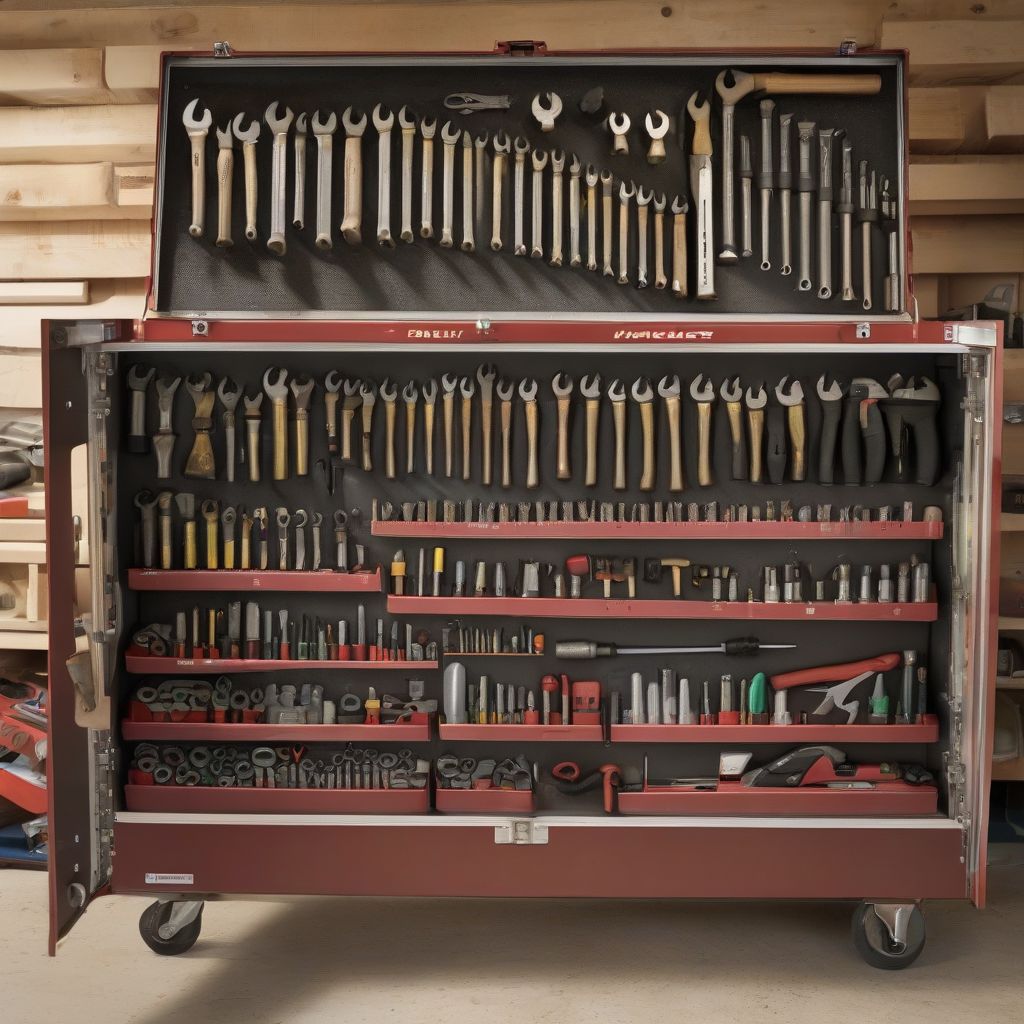Ever dream of building your own backyard shed, crafting intricate furniture, or simply fixing that leaky faucet with ease? The right DIY tools can empower you to bring those dreams to life. But like any valuable asset, your tools require proper care to ensure they perform reliably for years to come. This guide dives deep into the art of maintaining and extending the lifespan of your DIY tools, transforming you from a weekend warrior into a seasoned tool-care expert.
Cleaning: The Foundation of Tool Longevity
Just like a well-maintained car, clean tools are happy tools. Dust, debris, and grime are the enemies of smooth operation and can lead to premature wear and tear. After each use, take a few minutes to wipe down your tools with a clean cloth or brush. For tougher grime, use a solvent appropriate for the tool’s material.
Specific Cleaning Tips for Different Tools:
- Power Tools: Blow out dust and debris using compressed air. Pay close attention to vents and moving parts.
- Hand Tools: Use a wire brush to remove rust and a stiff brush for caked-on dirt.
- Cutting Tools: Remove sap and resin with a specialized solvent. Sharpen blades regularly to maintain optimal performance.
Proper Storage: A Safe Haven for Your Tools
Storing tools correctly is crucial for preventing damage and corrosion. A designated toolbox or storage area helps keep tools organized and protected.
Key Storage Considerations:
- Dry Environment: Moisture is a recipe for rust. Store tools in a dry, well-ventilated area. Consider using silica gel packets in toolboxes to absorb excess moisture.
- Organized Arrangement: Keep tools neatly arranged to prevent them from banging against each other and getting damaged. Use tool organizers or pegboards to maximize space and accessibility.
- Temperature Control: Extreme temperatures can also affect tool performance. Avoid storing tools in areas exposed to direct sunlight or freezing temperatures.
 DIY Tool Storage
DIY Tool Storage
Lubrication: Keeping Things Moving Smoothly
Just as joints need lubrication, so do many of your DIY tools. Regular lubrication prevents friction, reduces wear, and extends the lifespan of moving parts.
Lubrication Best Practices:
- Choose the Right Lubricant: Different tools require different types of lubricants. Use light oil for general lubrication and grease for heavier-duty applications. Refer to your tool’s manual for specific recommendations.
- Apply Sparingly: A little lubricant goes a long way. Avoid over-lubricating, as this can attract dust and dirt.
- Regular Application: Lubricate tools regularly, especially those with moving parts. The frequency depends on usage, but a good rule of thumb is to lubricate after every few uses.
Sharpening: Maintaining a Sharp Edge
Sharp tools are not only more effective but also safer. A dull blade requires more force, increasing the risk of slips and injuries.
Sharpening Techniques:
- Hand Tools: Use a sharpening stone, honing steel, or file to sharpen hand tools like chisels, knives, and scissors.
- Power Tools: Consult the manufacturer’s instructions for sharpening power tool blades. Some blades can be sharpened at home, while others may require professional sharpening.
Regular Inspections: Catching Problems Early
Regular inspections can help you identify potential problems before they become major issues. Take a few minutes every now and then to examine your tools for signs of wear and tear, damage, or corrosion.
What to Look For:
- Rust or Corrosion: Address rust promptly to prevent it from spreading.
- Loose Parts: Tighten any loose screws, bolts, or nuts.
- Damaged Cords or Wires: Replace damaged cords or wires immediately to prevent electrical hazards.
- Worn-Out Parts: Replace worn-out parts like blades, brushes, or bearings to maintain optimal performance.
“An ounce of prevention is worth a pound of cure.” – Benjamin Franklin. This adage rings true for tool maintenance. By investing a little time and effort in regular care, you can significantly extend the life of your DIY tools, saving you money and frustration in the long run.
Choosing Quality Tools: An Investment in Longevity
Investing in high-quality tools from the outset can pay off in the long run. While they may have a higher initial cost, quality tools are typically made from more durable materials and are designed to withstand heavier use. They are also more likely to have readily available replacement parts, further extending their lifespan. Consider tools suited for mobile and outdoor DIY work for added versatility (https://diyhomeprojectshub.com/the-best-cordless-tools-for-mobile-and-outdoor-diy-work/).
 High Quality DIY Tools
High Quality DIY Tools
Conclusion
Taking care of your DIY tools is an investment in your passion. By implementing the tips and strategies outlined in this guide, you can keep your tools in top condition, ensuring they are always ready to tackle your next project. From cleaning and storage to lubrication and sharpening, each step plays a vital role in maximizing tool longevity. Remember, well-maintained tools are not just a matter of convenience; they are essential for safety and efficiency.
What are your favorite tool maintenance tips? Share your wisdom in the comments below! And don’t forget to share this article with your fellow DIY enthusiasts.



